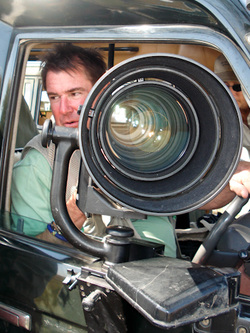
We have used Nikon® cameras and lenses exclusively since 1990. This decision was made based upon our need to embrace the autofocus technology that was becoming increasingly prevalent at that time. Nikon had made the decision to stick with the same bayonet lens they have used forever, thus allowing photographers who already owned Nikon lenses to use the same lenses on the new cameras, albeit without autofocus (AF). For us this was a major incentive, as it allowed us to take advantage of the large number of second-hand Nikon lenses available on the “used” market as photographers upgraded to the newer AF models, or changed to other brands. Nikon has been a major camera brand, and one used & relied upon by professionals the world over, for decades, with the result that there are always good, quality, pro lenses and bodies on the second hand market.
Our decision to “go with Nikon” was a turning point for us in our photographic careers, and one we have never regretted.
We sincerely believe that Nikon as a brand offers photographers the utmost in durability and reliability under harsh conditions – the kind of conditions wildlife photographers must work in to be successful. We work hard, under trying conditions of dust, heat and inhospitable terrain, for many months of each year. We have never molly-coddled our vehicles, our equipment, or ourselves. Our Nikons have never let us down.
In December 1992, when I was trampled by the giant elephant Tshokwane and both my Nikon 8008s cameras were trashed underfoot a 6-ton tusker, the film was retrieved unscathed from both bodies. Despite the destructive attentions of an angry elephant, resulting in both cameras being destroyed beyond repair, neither camera back sprung open nor let in any light. The film from both bodies was unmarred by scratches or any other damage. To us as photographers, for whom the image is the ultimate reward, this was the ultimate accolade for the durability of our Nikon cameras.
Today we use an array of Nikon digital cameras including the D3s, D700 and new D7000, and some of the latest lenses. But our battery of cameras still includes some of the venerable old Nikon classics – the F2 and F3, a totally manual FM2, and the more modern AF film bodies, the F4 and F5. Although we don’t shoot film much anymore – our photo agencies and most publishers insist on digital submissions – we still maintain a freezer full of Fuji® Velvia & Provia emulsions for those special occasions.
When we set off into the field on a wildlife photographing expedition our camera bags contain a selection of Nikon digital bodies, lenses and electronic flash units, along with an array of ancillary accessories such as Gitzo® tripods, Really Right Stuff® and Wimberley® heads, a laptop computer and LaCie® and Epson® hard drives for backups, an array of CF cards by SanDisk® and Lexar® in 4GB, 8GB, 16GB and 32GB capacities and a case full of lesser bits and pieces. We also never travel without beanbags, the most versatile camera/lens support device ever made! We make our own in heavy duty denim with Velcro® closures and can thus fill them with inexpensive beans, rice or even sand or gravel at our destination when travelling abroad.
We have an extensive selection of lenses for all occasions, but the most important lenses in our arsenal are all zooms and we use, extensively, the Nikon 200-400mm f4 AF-S VR, 70-200mm f2,8 AF-S VR II, 24-70mm f2,8 AF-S and 14-24mm f2,8 AF-S, as well as the recently added AF-S VR 28-300mm, a very handy lens. We also make use of the exceptional Nikon 600mm f4 AF-S VR-II, but this is an awkward and bulky piece of equipment and difficult to use under general conditions.
 RSS Feed
RSS Feed
